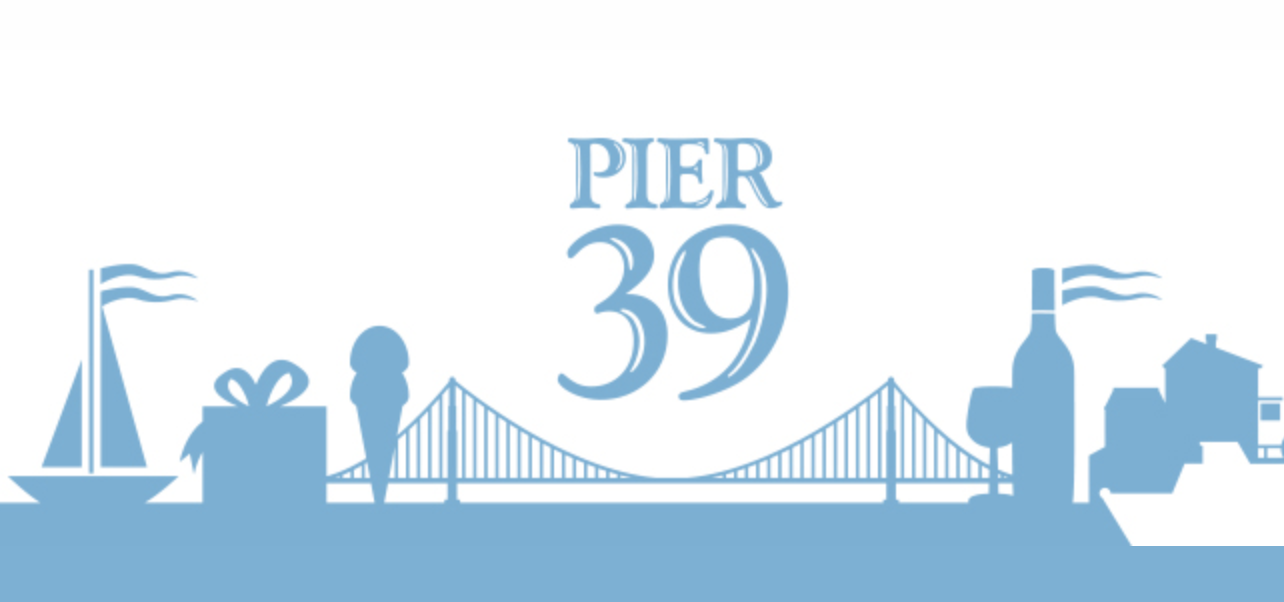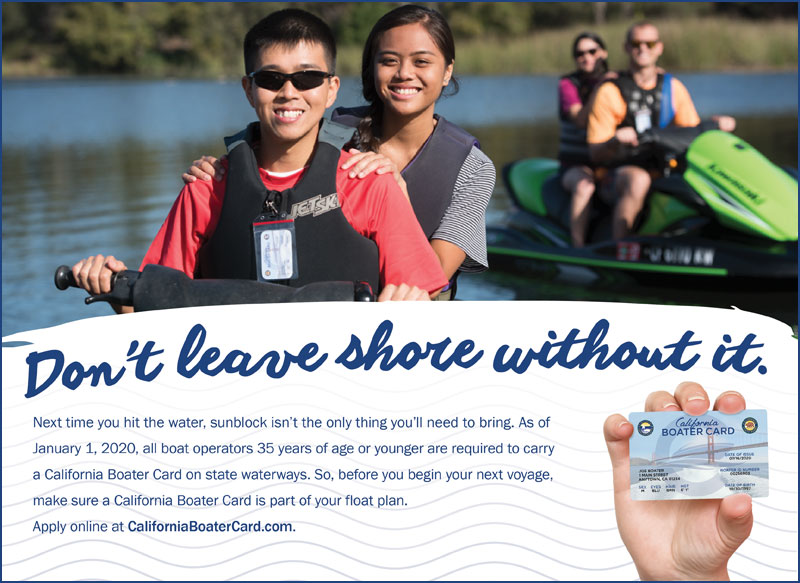
How Was Your Opening Day on the Bay?
We’ve prayed for rain all through this drought-prone winter, and finally our prayers were answered, on PICYA’s Opening Day on the Bay! It wasn’t enough rain to dent the drought though enough to somewhat dampen the Opening Day festivities. However, it was still a good day, with several colorful boats and crews enjoying the celebration.
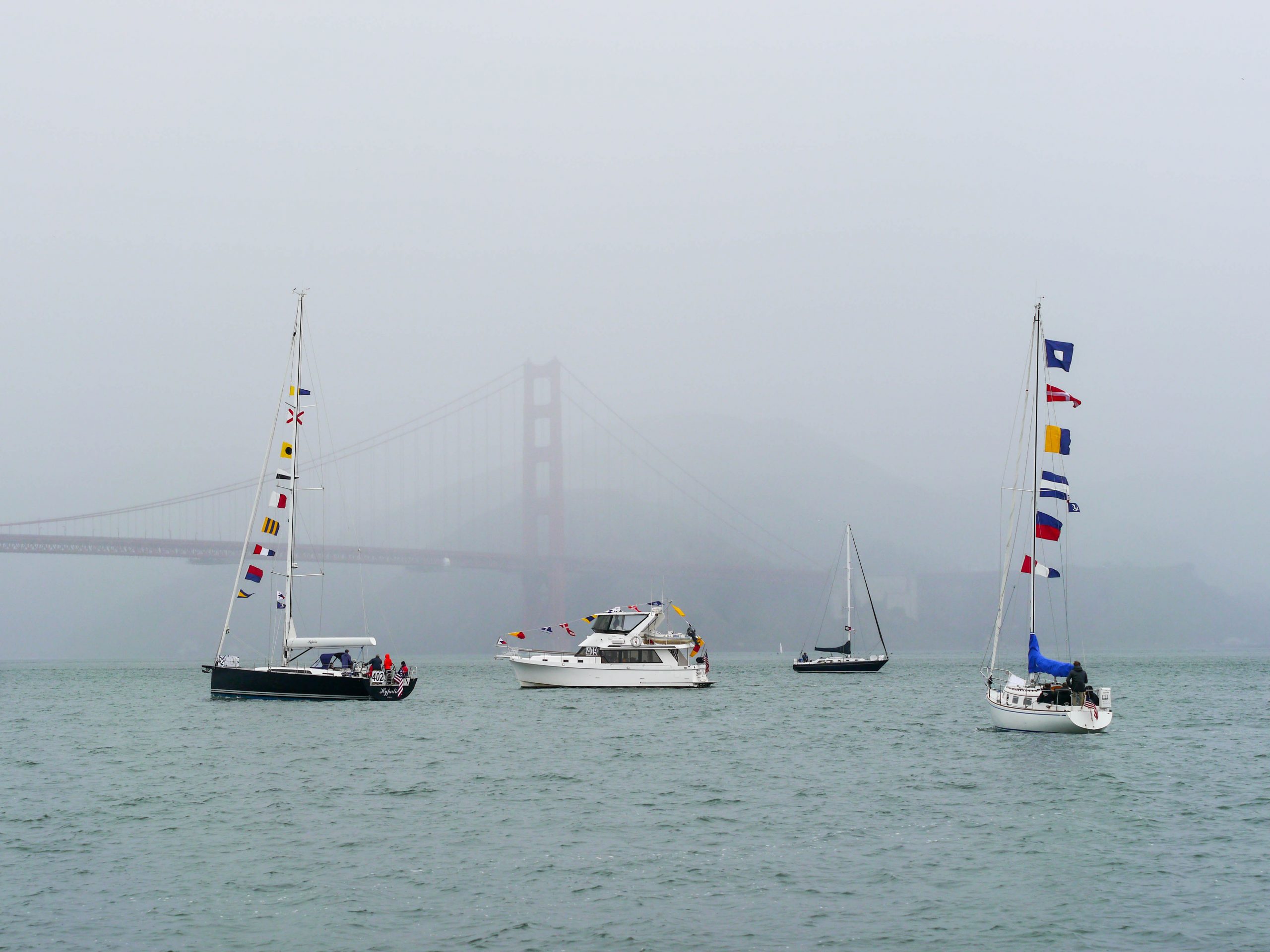
Wesley and Christina Nunez, the new owners of our Ranger 33 Summer Sailstice, went out to enjoy a brisk and chilly sail around the Bay, along with Wesley’s dad, Roger.


Island Yacht Club (IYC) was out in full celebration.
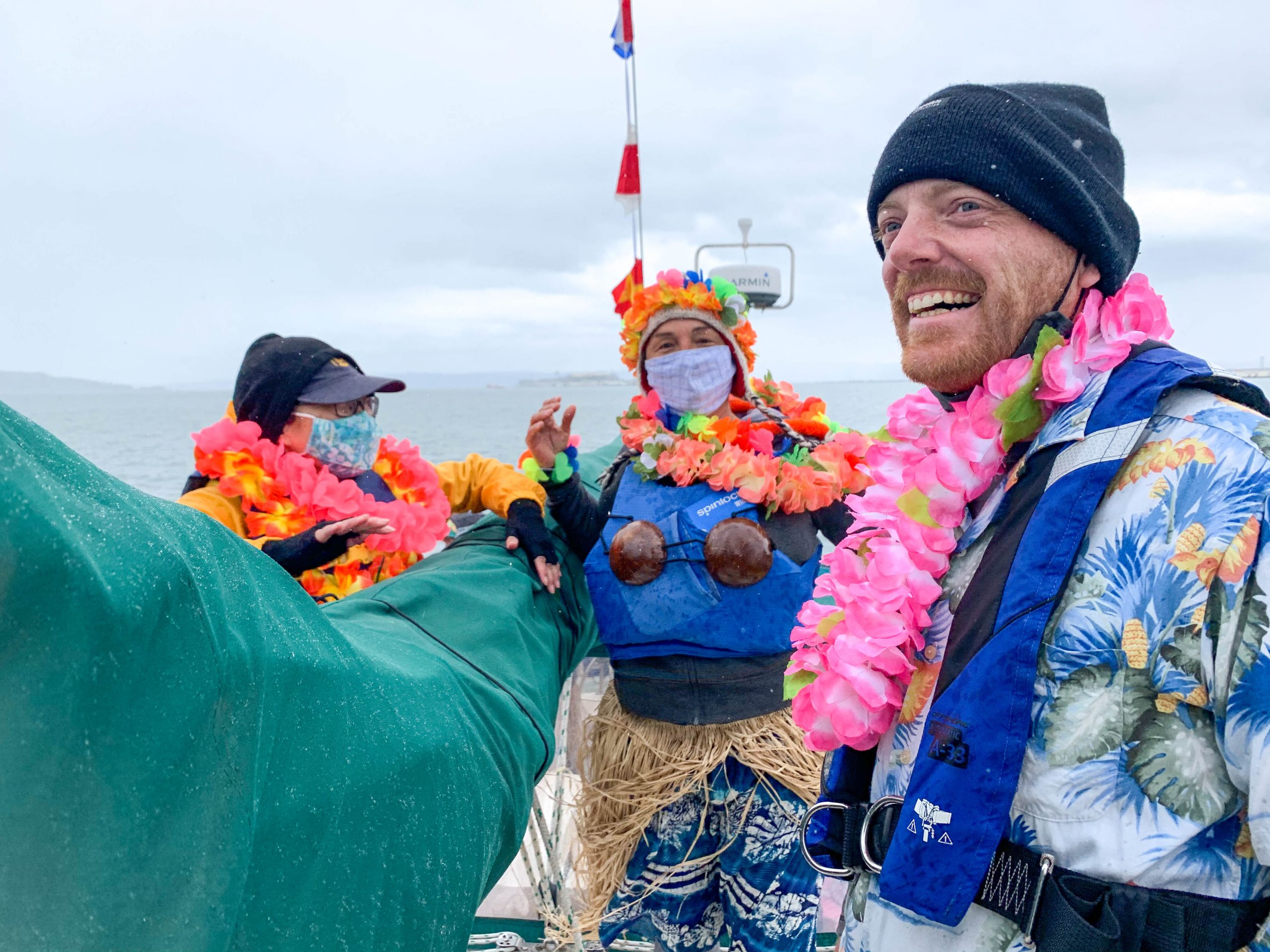
“Island Yacht Club was proud to present Amanda, our Opening Day flagship. IYC is a repeat PICYA Decorated Boat category champion — and our 2021 entry — a Catalina 36 donning an 80-ft grass skirt and two giant coconuts — was dressed to impress. At the helm was Island Yacht Club’s Cruise Chair, Eric Korbas, joined by IYC members and friends. The luau theme reflected the warm days and relaxed vibe of Alameda Island life, as well as being a nod to our place in the Pacific. Amanda was also a participant in the PICYA Pacific Rim Unity Parade and is a proud symbol of the ‘Little Club that Can’ — Island Yacht Club. While a decorated boat category winner has not yet been announced, we would like to say a huge thank you to Eric and the IYC volunteers who decorated and crewed Amanda – rain or shine!” – Island Yacht Club
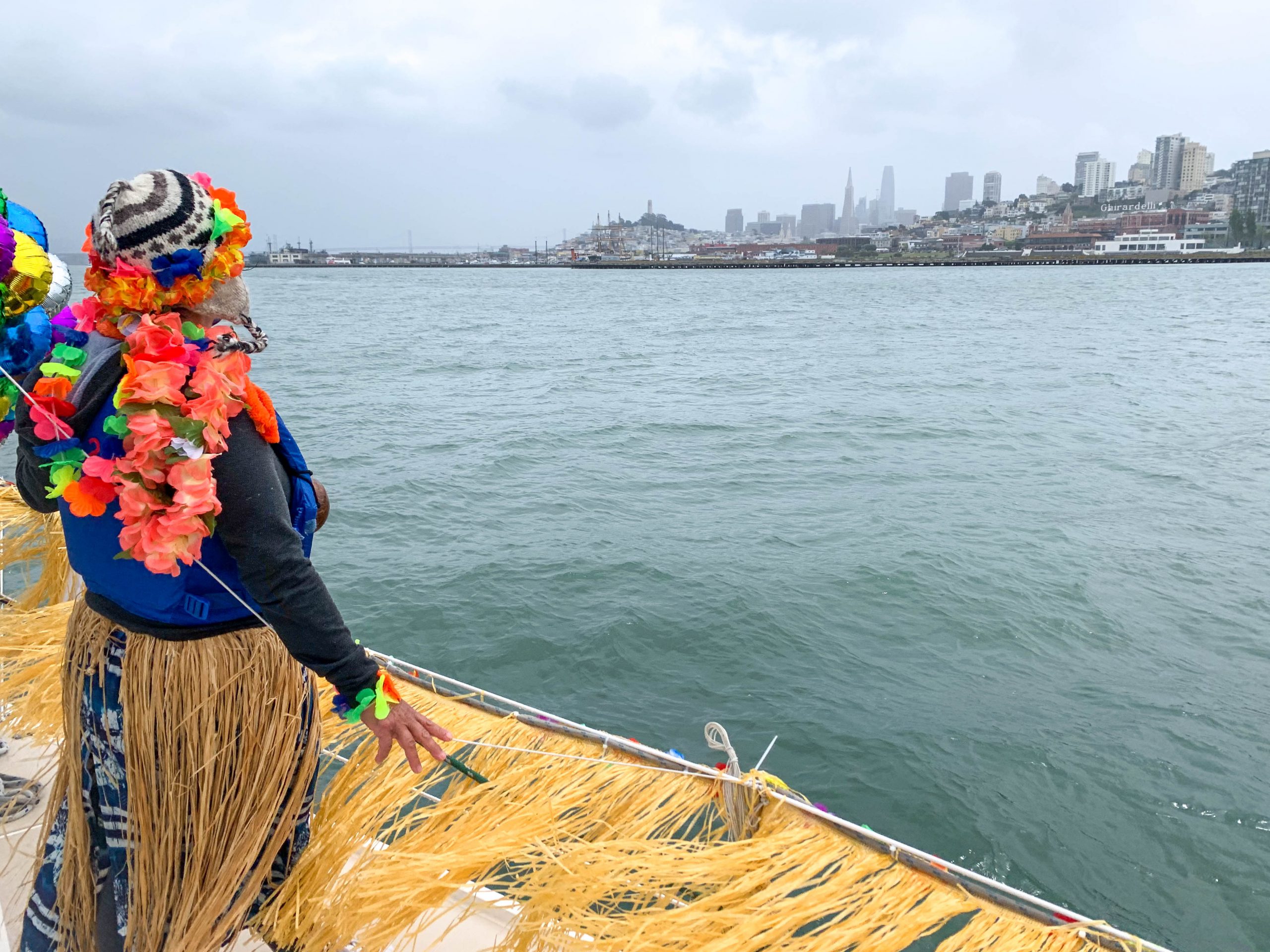
With all the decorations and dancing in their video, we felt quite warm.
Did you get out on the Bay for Opening Day? Send us your photos here.
Fourteen Years On: Sailing North for the Second Time
Last Monday we shared David Cohan’s story of his first trip sailing north along the West Coast. Fourteen years later he retraced his steps, this time with a different boat.
Our second trip back north was in 2000 on Tahu Le’a, our then fairly new Morris 46 cutter. We were still doing the delivery with just Sharon and me. Sharon was by that point beginning to become handicapped, but could still run the boat, especially steering and working from the cockpit. Tahu Le’a could motor at 7.5 knots all day, which meant our daylight-hours range was more like 90-100 miles if motoring or motorsailing in calm or light winds. We made use of her speed, with far fewer stops:
1. Coho, as before, was still a great spot to wait for a favorable day to round Point Conception. And wait we did. In what I felt then, and still believe, was one of the more mature decisions of my life, we waited for two days and three nights while 25-35-knot NW winds blew off Point Conception and beyond. On the morning of the third day we headed out and around on a pleasant motorsail after the winds diminished.
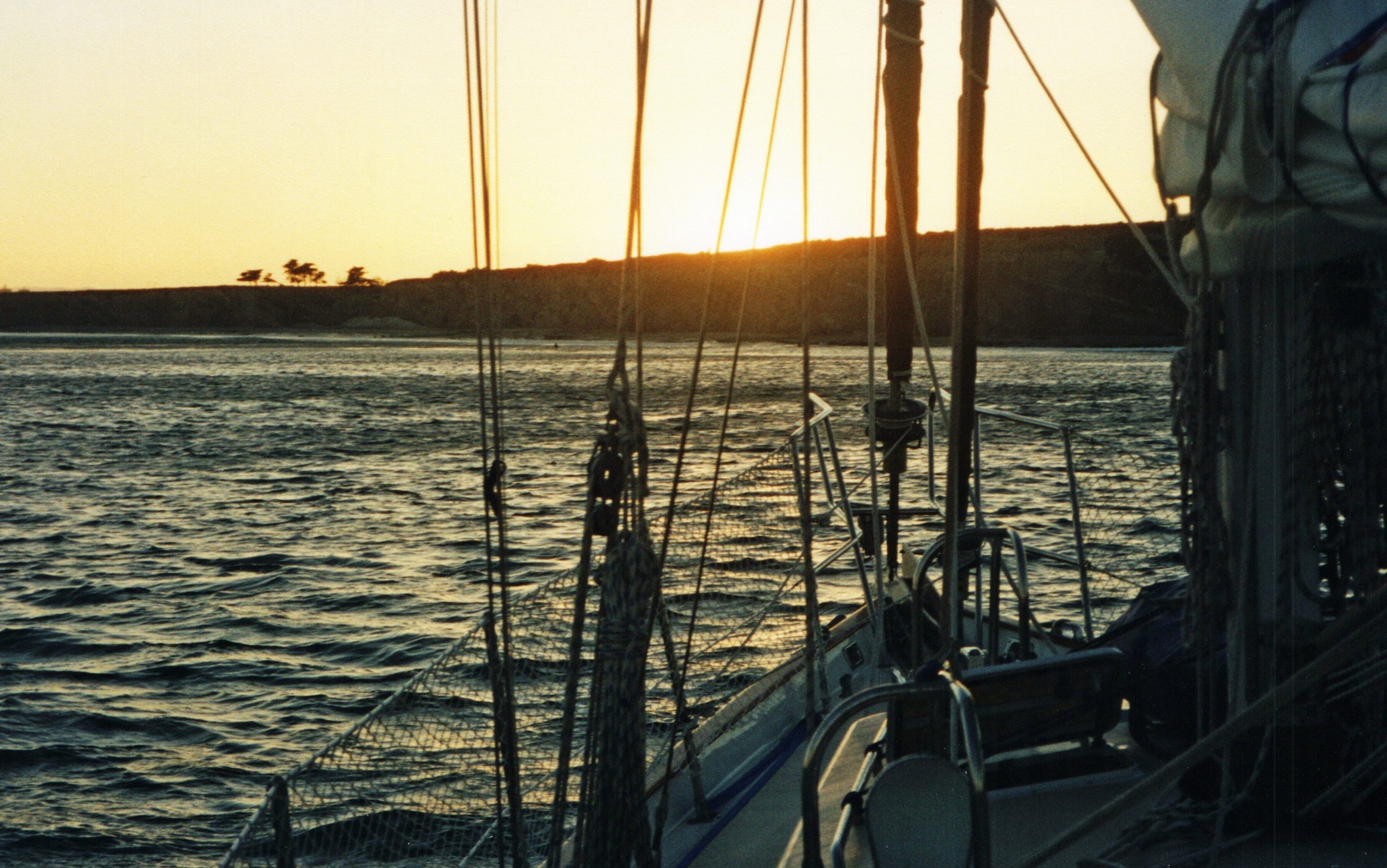

2. San Simeon. We made use of Tahu Le’a‘s cruising speed and more powerful autopilot to cover 95 miles. Still a beautiful and protected spot.
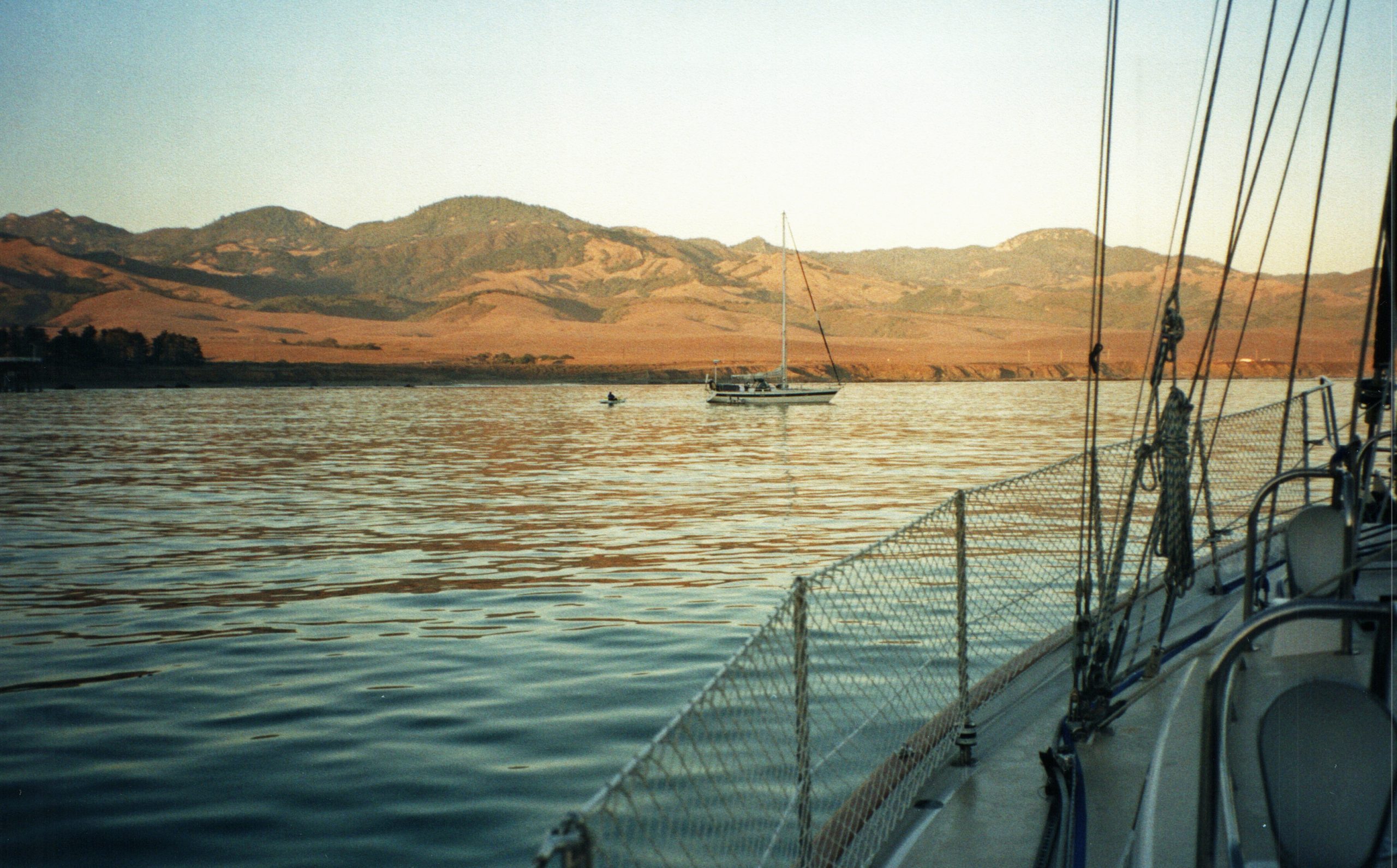
3. Monterey. A 90-mile day allowed us to easily skip Pfeiffer [Cove].
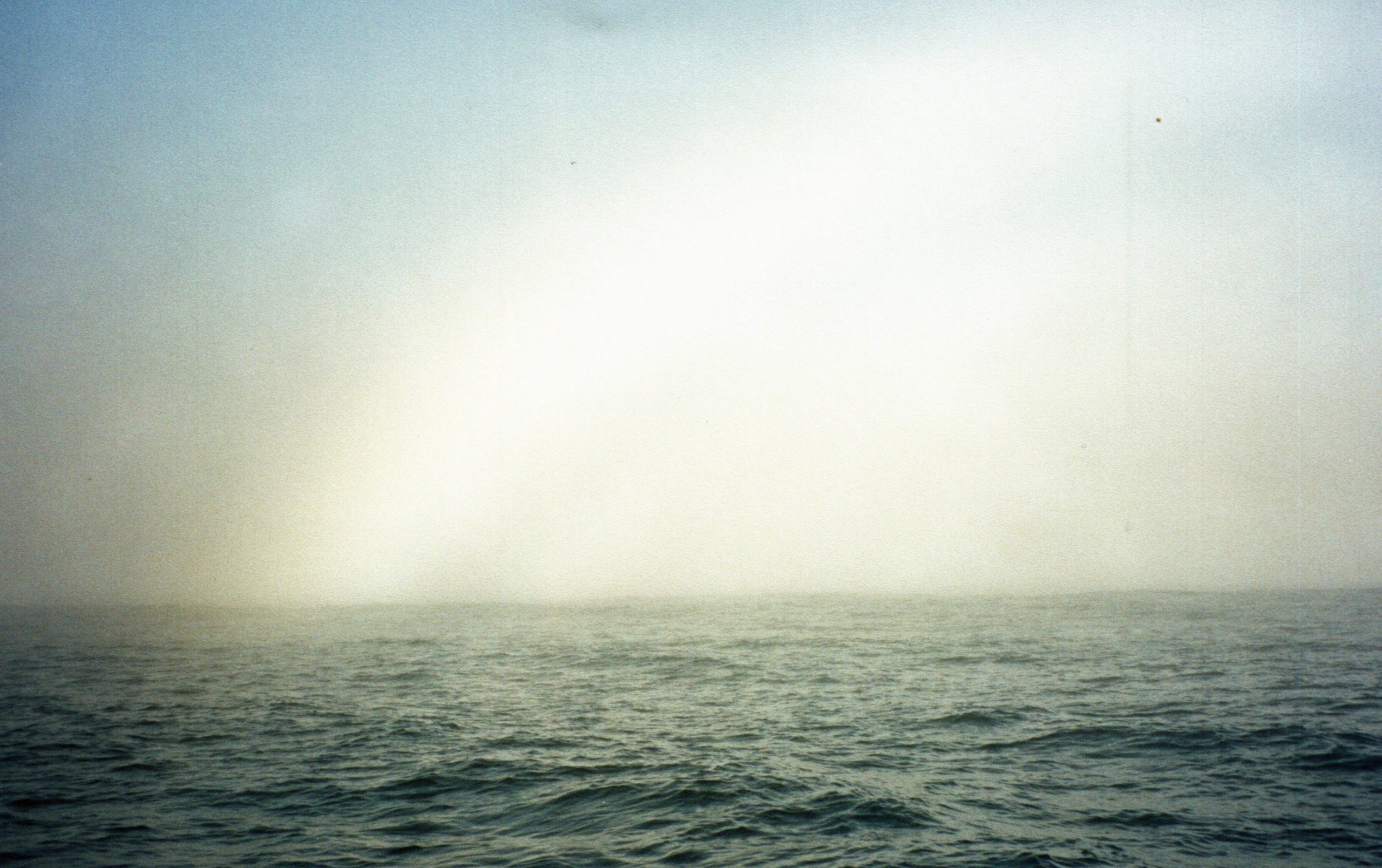
4. Santa Cruz. A short run for a break, and to have dinner with friends who live there.
5. Half Moon Bay.
6. Coyote Point.
Again, an easy trip — only six travel days, as opposed to nine on the smaller and slower Synergy 14 years prior, but with two days added waiting out the weather at Coho.
In case you’re wondering, “What goes up must come down” applies here. If David sailed north twice, did he ever sail south? The answer is, yes, he did.
We’ve made three trips down the coast, all nonstop from TI Cove or Ayala Cove to Santa Barbara or Fry’s Harbor on Santa Cruz Island. Of the three, two (1986 and 1987) were totally miserable — beating or motorsailing into southerly winds and rough seas, in fog or low overcast.
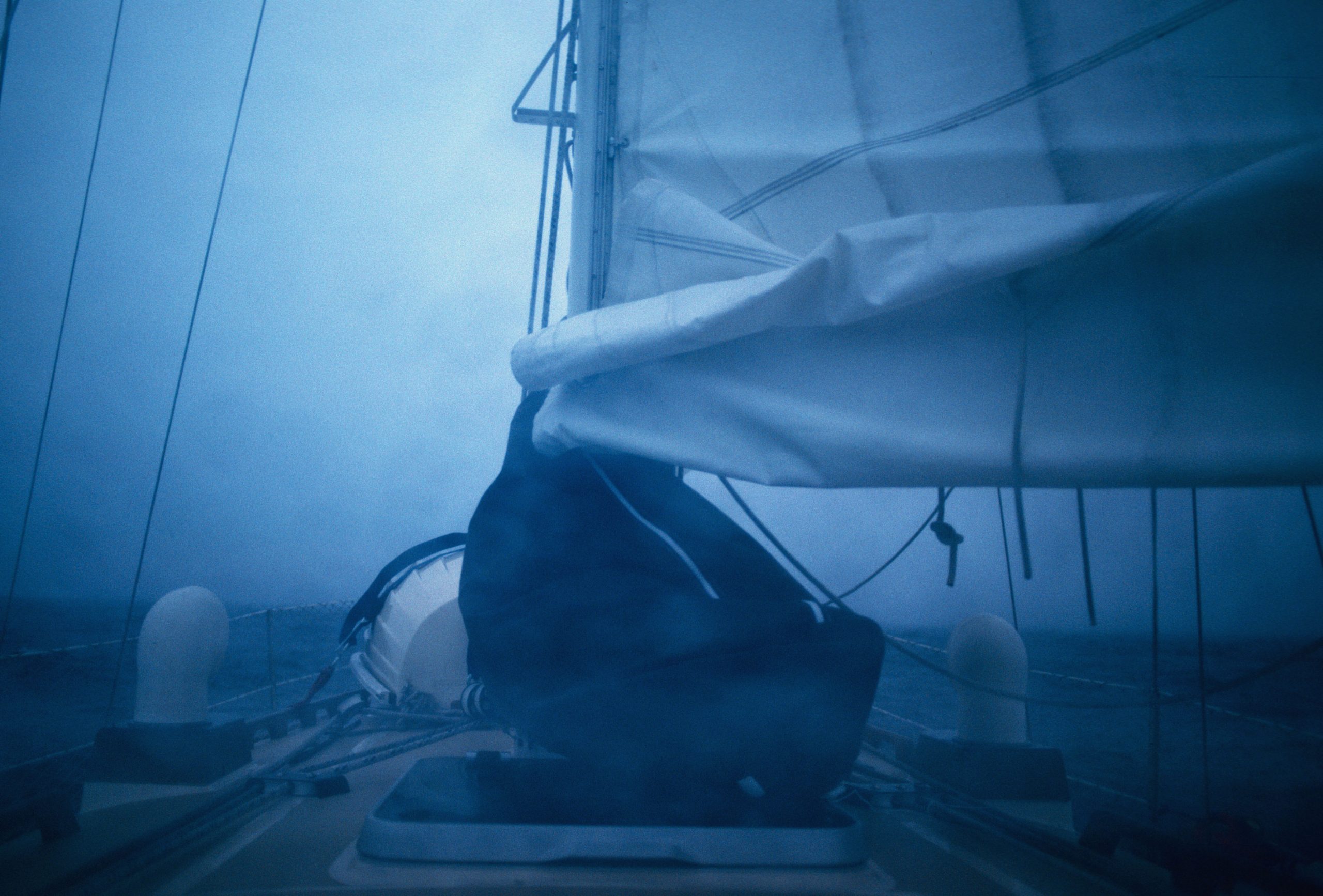
Our third trip, in 2000, was reasonably pleasant with generally good sailing, as one might hope, or even perhaps expect. But our two miserable trips sort of balance out the good luck we had heading back north as noted above.
Pier 39 Is Hiring
We’re looking for a Marina Office Administrator:
The perfect applicant has accounting/bookkeeping knowledge, Office 365, organizational and multitasking abilities, customer service/people skills, no small degree of patience for dumb questions, and a love of boating and boaters. Position will include one weekend day. We offer great benefits, a diverse and friendly team, and breathtaking views.
Click the link to see the full requirements!
Paul Cayard and Luke Lawrence Win Star Western Hemispheres
He’s moved into the ‘Executive Suite’ of the US Olympic sailing team, but Paul Cayard is also continuing to rise to the top of Olympic sailing classes. Although the Olympics dropped the Star class in 2012, it remains one of the most competitive one-design fleets in the world. This past weekend Cayard and his crew, Luke Lawrence, put in a winning performance at the Star Western Hemispheres hosted by Biscayne Bay Yacht Club in Miami, Florida.
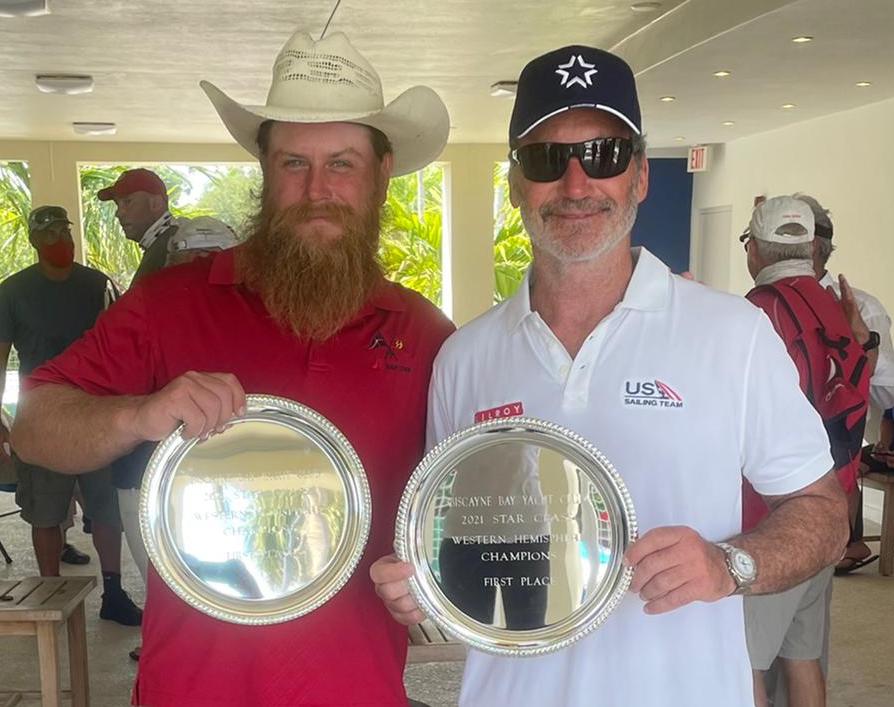
Cayard and Lawrence led the scoreboard beginning on Day 1 and won the championship without sailing the final race.
They’d only raced together once before — they finished third at the Midwinter Series on these very waters last February — but they made it work. Lawrence mastered the crew role in the boat — he usually steers — and they won half the races they sailed.
“Luke and I sailed smart. We were fast and never finished worse than third,” said Cayard. “It’s been a long time since I’ve won a Western Hemisphere Championship, so I’m super-excited.”
In second place, the Danish/German team of Jørgen Schoenherr and Markus Koy had a very consistent weekend. They were only 3 points behind the winners and 2 in front of the third-place team, the 2016 Star World Champions Augie Diaz (USA) and Bruno Prada (BRA). Diaz and Prada were sailing together again after a few regattas as competitors — the Brazilian superstar won his second back-to-back Bacardi Cup only last month crewing for Mateusz Kusznierewicz.
Great Britain Wins on the Great Sound
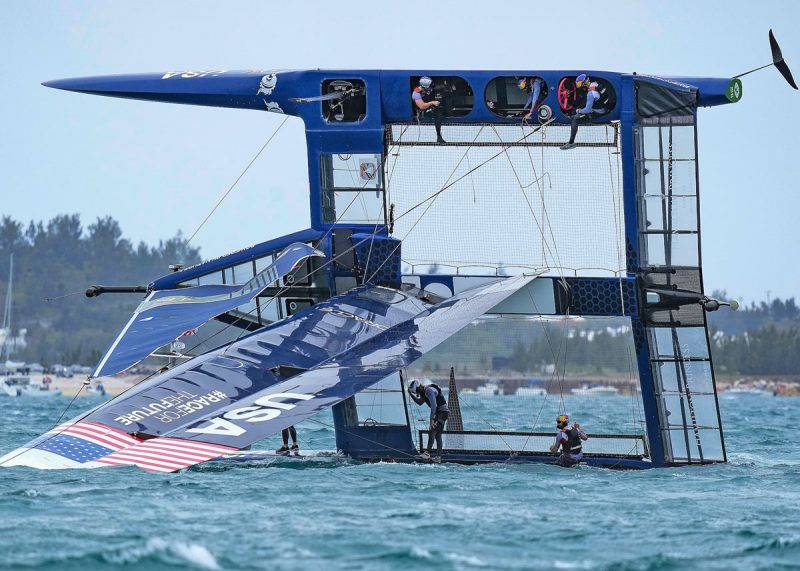
Under a challenging COVID cloud, the organizers at SailGP delivered an action-packed regatta, making the best of the current situation in the worst of circumstances in locked-down Bermuda. Larry Ellison and Russell Coutts’s traveling high-tech foiling roadshow checked off the boxes in most respects.
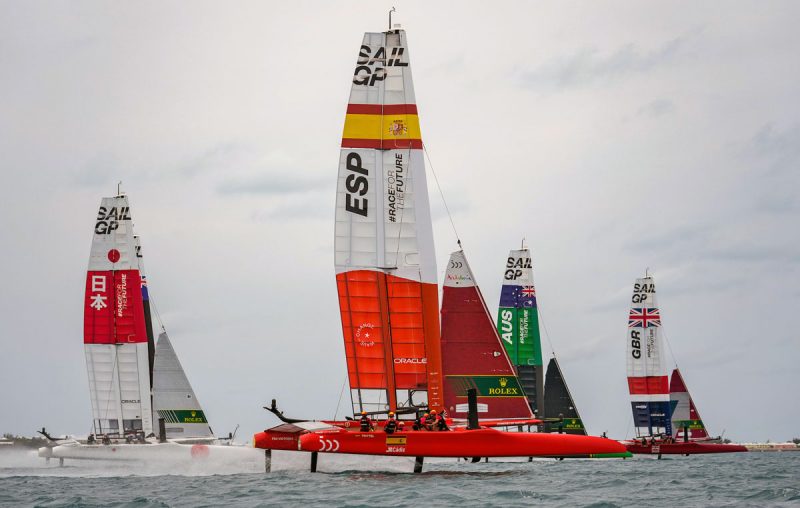
SailGP concluded its first race weekend in more than a year in dramatic fashion with two days of adrenaline-fueled fleet racing. The wind limits needled to the top in a carnage-crazy event. It seemed fortunate that no one was carted away in an ambulance.
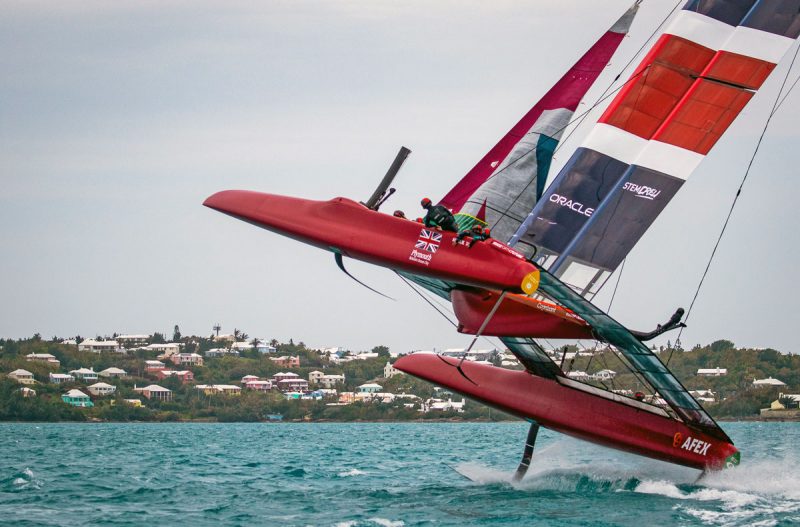
Multiple near misses highlighted the event. In one instance, the French boat would have landed on top of another if not for a last-minute spin away. Nathan Outteridge spectacularly parked his Japan F50 on top of USA, with her Statue of Liberty graphics emblazoned on her fluorescent-blue hull.
In both instances, crewmembers were fortunate not to be in the wrong place at the wrong time. As exciting as SailGP is, it is incredibly dangerous. These foiling catamarans have closing speeds of up to 100 knots. One of the challenges going forward for the event is to find the on-the-water practice time for the teams before someone gets seriously hurt or worse.
The Final Race
Sir Ben Ainslie’s Great Britain team picked up where they’d left off last year by dominating the second day of racing to capture the first round of SailGP’s World Championship, much to the chagrin of Tom Slingsby and his Australia team, which carried the weekend but not the day. It was a great Great Britain day on the Great Sound, as the winner-takes-all podium race between the Brits, Aussies and French determined the weekend’s champion.
It came down to a brilliant boundary jibe by Ainslie as Slingsby struggled to free his boat from GBR’s significant wing wash. Be they 18-meter ‘baby’ wings, the dirty air was still significant enough for the British to take control of the race. The French had fallen back, seeming to allow the two heavyweights to battle it out.
In strengthening winds of up to 25 knots, control was the name of the game. GBR’s wing trimmer Iain ‘Goobs’ Jensen and flight controller Luke ‘Parko’ Parkinson expertly piloted the team’s F50 to keep the maneuvers smooth and to put dirty air on the Australian boat behind them.
The neck-and-neck action continued throughout the race, with the teams splitting at several points to seek better pressure to extend the lead or to find an overtaking lane. The British team managed to keep their noses in front and take the title by just four seconds.
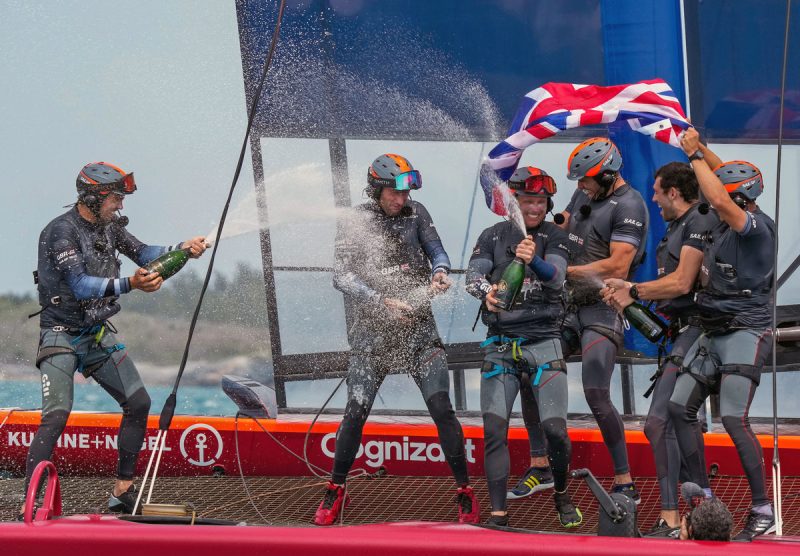
“That was a cracking day of racing. That’s what we want to do, go up against these guys in conditions like this. It was just perfect,” said Ainslie. “I have to give huge credit to the team. We really struggled in the opening day.
“We tried to give the Australians a little luff out of Mark 1 and got quite close to a penalty. Then it was all on that following jibe out of the boundary. The guys nailed it. The guys on board, especially Parko flying the boat when we weren’t 100% in terms of control, did an awesome job.”
The Australians started strong, crossing the start line first at flying speeds of almost 50 knots. “It was an amazing weekend, but I can’t help feeling a little frustrated and disappointed in the final results. That is the way it is with this racing: You have to win the last race,” said Slingsby, skipper of the Australian team. “We sailed amazingly, but we did have a few boat malfunctions in the last race. Ben was ahead of us when they happened.
“We were right on his tail. Then we had a few issues with our board going down. It was raked in the wrong position, and it forced us into a big bow stuff when we went into a terrible tack,” added Slinsgby. “That let him get out to a big lead. When we were able to catch him, we had another little issue, but we couldn’t pass him. Hats off to them — they sailed amazing when it counted.”
Collision and Capsize
The drama of the day came when USA and Japan collided, with the two teams’ boats incredibly attaching to each other. The incident forced both teams to the sidelines, unable to sail again for the rest of the day due to the damage caused to their F50s. Japan actually had to pump water out of the boat to keep it afloat — not to the dramatic level experienced by American Magic in Auckland during the Prada Cup a few months back, though.
“It was obviously pretty unfortunate. We had awesome conditions out there and were having a great race going around the bottom gate sailing upwind on starboard tack,” recounted USA helmsman Jimmy Spithill. “We had given the Japanese a lot of space. They were on port tack, and initially I thought they were going to duck us and attack, but they just took us out.
“It came as a complete surprise,” he added. “Thankfully the crew was all right because we were on the windward side. We sustained damage just trying to separate the boats. Once we were untangled, we thought we could just finish the race, but the boat lost all its power. We lost control of the wing, then the port rudder snapped and sheared off at the top of the stock. We started to bear away, and at that moment it went over.”
Video courtesy Matt Knighton
“Part of the reason the collision happened is there is a certain blindness to these boats and we’re still trying to develop our communication processes,” said Outteridge, who took complete responsibility for the accident and is one of the best technical sailors in the world. “The hard thing is that you can’t work on these things unless you’re on the boat sailing.
“We need to do what we can do for that not to happen again,” continued Outteridge. “We were obviously in the wrong, being on port tack.” (USA had the right-of-way, being on starboard.)
“It was a baptism by fire. We had 14 months off from racing, no training, and I wouldn’t say we felt comfortable or at home,” said Outteridge. “It is going to take time for us to jell. That is the challenge over the next four weeks, because we can’t just get back on these boats and practice. There are no simulators. You basically come, race, and go home. You don’t get to train,” said Outteridge. “It’s completely different from any other sailing competition I’ve ever been a part of.”
“In a few ways it reminds me of motor racing,” said Spithill. “When you’re on tight tracks going fast, sometimes someone is going to take you out and there is not a lot you can do. When we got to the dock, Nathan came straight over and apologized. We’re good mates on the shore, and that shows the kind of guy he is.
“The boats have taken a big step forward from when I sailed them last in 2017,” added Spithill. “Certainly, big upgrades in the foils and the hydraulic wing systems. The speeds are definitely higher. They can cover a much bigger range in performance.
“We really have the best teams in the world out here. The Great Sound in Bermuda is one of the great racetracks for foiling boats. In almost any type of wind conditions you get flat water.” (That’s because of the island and all the reefs.)
The Leaderboard
Ainslie’s team won just a single fleet race across the two-day event, but as is his nature, he put the pedal down when it counted the most to take the top spot on the leaderboard heading into Taranto, Italy, on June 5.
France copped a podium finish. Denmark and Japan ranked sixth and seventh respectively, with New Zealand improving from poor opening-day performance to end the weekend in fifth place. Spain, which finished third in both of Day 2’s fleet races, missed out on qualifying for the Final by just a single point, placing fourth in the event.
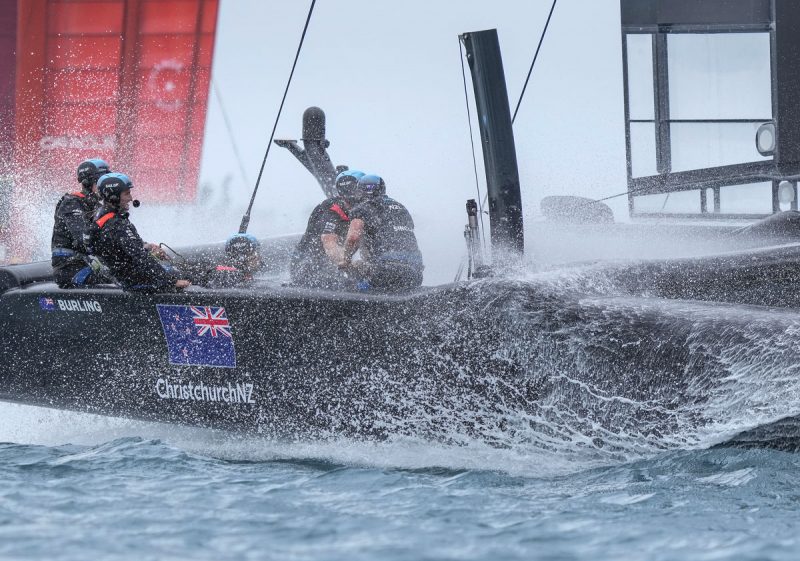
SailGP is an incredible opportunity to bring this kind of extreme stadium sailing close to shore, but regatta director Iain Murray, Coutts and Ellison have some work to do in the coming weeks and months to get the sailors the appropriate training and tools on the water they need to compete safely in this sport.

